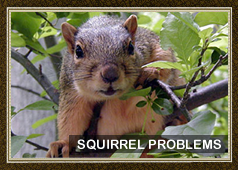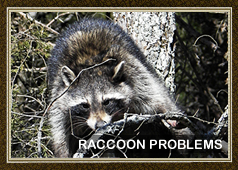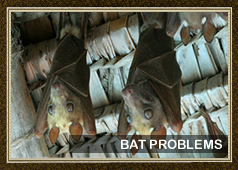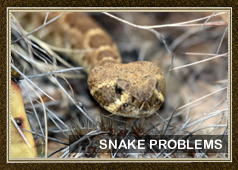



 |
|
The mere mention of the word "snakes" evokes an emotional response. It may be wonder, exhilaration, shock, or even fear. Many of these responses occur because snakes appear and behave unlike any other animal we know. Others are deeply rooted in tales and myths that give snakes extraordinary powers and abilities. Regardless of their source, misconceptions about snakes have made them among the most persecuted of all animals. A common reaction to a snake is to kill it on sight whether or not it poses a danger. However, the fact is that most snakes are harmless, and even dangerous ones would rather flee than fight. Once we begin to learn about snakes, we can replace our misconceptions with facts and our fears with curiosity, and we can begin to appreciate their important roles in our environment.
Snake are reptiles and belong to the same group of animals as lizards, turtles, and crocodiles. Reptiles have dry scales that are shed periodically. Sometimes confused with reptiles, amphibians such as frogs and salamanders always lack scales and most have moist skin. Unlike mammals and birds, reptiles cannot generate their own body heat and depend on outside sources to raise their body temperature. This trait obligates them to wait out long periods of extensive cold and hot conditions, a habit that contributes to their secretive nature.
Snakes differ from other reptiles by having no legs, ears, or eyelids, and by possessing only one functional lung (the right one). The most notable characteristic of a snake is its extremely long, slender body. A snake's body allows it to effortlessly climb, swim, and slip into the smallest spaces. Although snakes lack ears and cannot technically hear, they do have the ability to detect low frequency vibrations from the air and ground. Instead of eyelids, snakes have a clear scale covering for each eye. The shedding of this scale causes the eye to cloud over for a few days, which probably led to the myth that snakes go blind during certain times of the year.
Worldwide there are over 2,700 snake species distributed throughout every continent except Antarctica. There are 30 species in Virginia. They occur across the Commonwealth from coastal marshes, agricultural fields, and abandoned buildings, to Piedmont forests and mountain ridge tops. Within these habitats, snakes play important roles as both predator and prey. All snakes eat other animals, and none feed on plants. Snakes are able to swallow prey whole because their jaws are loosely attached together. Major prey include insects, fish, amphibians, other reptiles, birds and their eggs, and rodents. Some snakes have very specialized diets of only one or two prey types. Certain mammals, birds, and humans are significant predators of snakes.
A snake in your home is the most difficult situation for all concerned, including the snake. A snake is usually in your house to find food such as mice and rats. Eliminating the food source will likely rid you of your snake problem. Almost all snakes that enter homes are non venomous species. A snake can enter any opening that a mouse can squeeze through. Sealing all crevices and spaces where pipes and electrical wires enter the dwelling will help prevent snakes from making your house their home.
This can be a very time consuming task and sometimes requires a professional to inspect the property to assure you do not “seal” the snake inside your home. Give us a call today as Snakes are our specialty,
703-881-3170
|